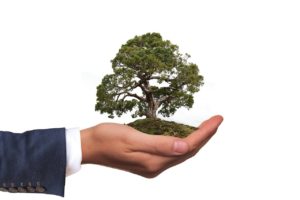How to Minimize the Effect of Plastic to Our Environment
Plastic products are omnipresent all over the world, and technological innovation has increased as dependence on these weights and goods. More specifically, the use of water bottles contributes a significantly to the continued deterioration of our environment. Companies have developed many methods for processing plastics in ship hulls and carpets, cushions, and railway sleepers. About 75% of Americans recycle newspapers and cardboard while they recycle vinyl. Industry analysts believe that this low response rate may be due to a lack of understanding of plastic coding – that triangle with a few in the middle – which indicates which type of plastic is a commodity.
Improve Recycling Rate
 Although the recycling rate for this and other products is not yet spectacular, the numbers have been rising steadily since 1990. Processing and application tests have been improving. Madhu has mixed aggregates and bitumen with plastic to form a product. Conventional recycling producers work in a highly regulated environment and focus on producing a long list of traditional products.
Although the recycling rate for this and other products is not yet spectacular, the numbers have been rising steadily since 1990. Processing and application tests have been improving. Madhu has mixed aggregates and bitumen with plastic to form a product. Conventional recycling producers work in a highly regulated environment and focus on producing a long list of traditional products.
They follow a single methodology, although the processes are different. It can be completed before the product reaches the manufacturer—a readjustment of PET (polyethylene terephthalate) film. The material has been washed with impurities and lighter substances than plastic.
Treat PET Materials to Form New Products
PET materials are have been treat with methods that distinguish more massive particles from softer ones, which is called the sinking phase by flotation. The dry or hard plastics are then transformed into products by manufacturers worldwide and processed. But new methods are continually being developed to promote PET products, such as a depolymerization process that “reverses” the composition process used to make the polymer. Some operations make recycling much more ecological and economical, as well as pilot projects. PET can be used to create office products, garden furniture, trash cans, buckets, safety cones, and much more. HDPE can use for both underwater and sea production.
Use PET Plastic as a Mold Product
Of the five main types of PET plastic, many used for the production of new PET bottles and containers. Other molds are plastic sheets or plastics, used to mold small things such as detergent shovels, construction materials for packaging and transportation. Also, resins molds used, such as automobile parts and equipment that mixed to make carpet fibers, fabrics, and fiber fillings. Awareness of the benefits of vinyl, as well as the profitability of PET production, can reduce damage and promote a company that produces commercial and useful products.
Educate Society About the Importance of Recycling
 In the United States, many city governments have made it easier for customers to recycle plastic. Cities accept all products and sort them. Consumers don’t have to worry about splitting PET quantities or removing labels. Most states have passed laws commonly known as “bottle notes,” which cost a small fee for containers. For the consumer, there must be an incentive for recovery value.
In the United States, many city governments have made it easier for customers to recycle plastic. Cities accept all products and sort them. Consumers don’t have to worry about splitting PET quantities or removing labels. Most states have passed laws commonly known as “bottle notes,” which cost a small fee for containers. For the consumer, there must be an incentive for recovery value.
Regardless of how this process is used to create value from missing PET products, it was evident that people, governments, and companies are talking about a financial and environmental gamble in the practice of plastic recycling.…

